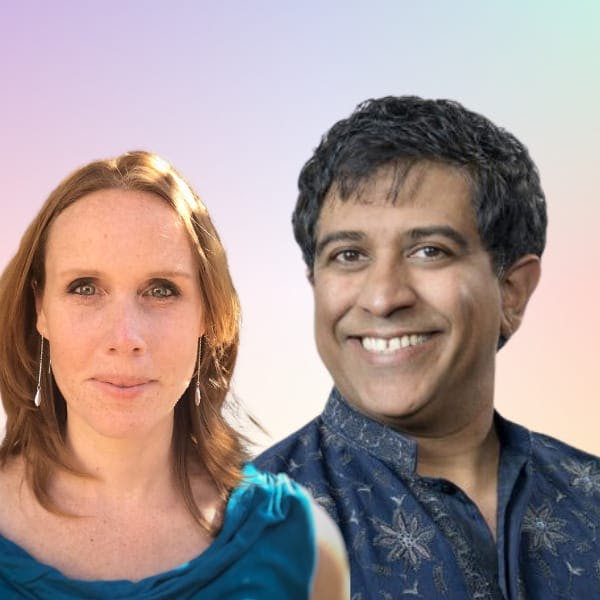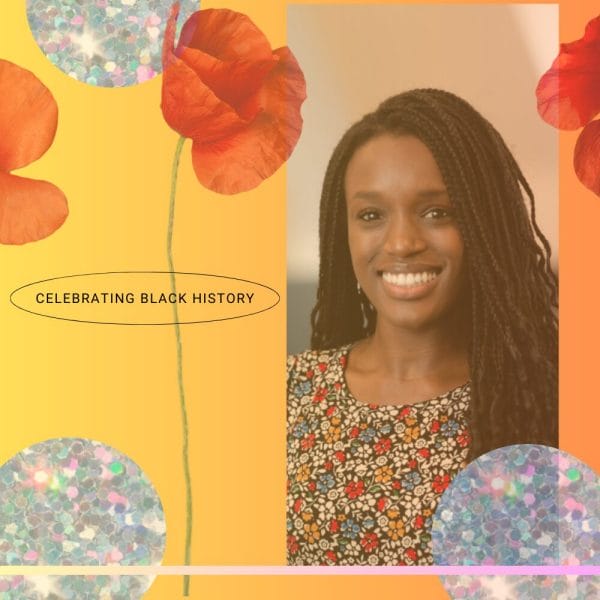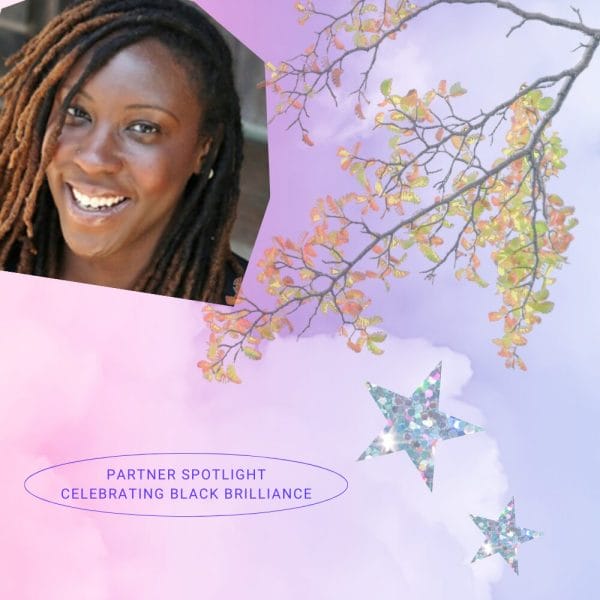Hopelab strives to advance solutions that support, affirm, and empower young people. As we continue to bring this mission to life, President & CEO, Margaret Laws, shares the latest developments for the future of our lab.
We are pleased to announce and welcome two new additions to the Hopelab team:
Jaspal S. Sandhu, Ph.D,. as Executive Vice President (EVP) and Amy Green, Ph.D., as Head of Research. Combined, their unique perspectives play a pivotal role in conceptualizing, executing, and delivering on our mission to support the well-being of young people at the intersection of tech and mental health.
Jaspal teaches interdisciplinary design at UC Berkeley’s School of Public Health, where he served as the Fung Fellowship’s faculty lead from 2016-2021. Prior to joining Hopelab, Jaspal was co-founder and managing partner at Gobee Group, a global design consultancy. Amy is a noted clinical psychologist who most recently served as the Vice President of Research at The Trevor Project, the world’s largest suicide prevention and crisis intervention organization for LGBTQ+ young people. I had the pleasure of sitting down with both to learn more about their work and get a glimpse of their vision for the company.
Jaspal, you’re known for leading a global design consultancy and working with undergrads in the area of tech, well-being, and health. What are the opportunities to see to draw from your unique background in this new role?
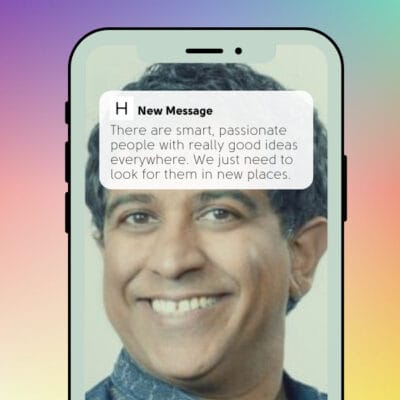 Jaspal: There are smart, passionate people with really good ideas everywhere. We just need to look for them in new places. Over the last few years, I led an effort called Reimagine Lab in partnership with the Blue Shield of California Foundation. Our goal was to use human-centered design to spark innovation in preventing family violence and domestic violence. That hadn’t been done before. We recruited a team of 16 fellows from across California. We selected a group that would really represent California’s diversity. It was the single most varied group I’ve worked with in my career – we had a college professor, a college student, a retiree, a police officer, a lawyer, non-profit CEOs, social workers, and more. That doesn’t begin to tell you about their rich personal identities and life experiences. There were two things the fellows had in common at the start of this experience: they were passionate about ending domestic violence, and none of them were entrepreneurs.
Jaspal: There are smart, passionate people with really good ideas everywhere. We just need to look for them in new places. Over the last few years, I led an effort called Reimagine Lab in partnership with the Blue Shield of California Foundation. Our goal was to use human-centered design to spark innovation in preventing family violence and domestic violence. That hadn’t been done before. We recruited a team of 16 fellows from across California. We selected a group that would really represent California’s diversity. It was the single most varied group I’ve worked with in my career – we had a college professor, a college student, a retiree, a police officer, a lawyer, non-profit CEOs, social workers, and more. That doesn’t begin to tell you about their rich personal identities and life experiences. There were two things the fellows had in common at the start of this experience: they were passionate about ending domestic violence, and none of them were entrepreneurs.
By the end of three years, the fellows had spun three social ventures out of Reimagine Lab and secured external funding to make them go. We learned about the power of investing in unlikely innovators. We also learned that any successful approach in this space was going to collaborate with young people as a way to address intergenerational cycles of violence and trauma. I’m excited to see how I can help Hopelab continue to engage young people and young entrepreneurs.
Amy, you have nearly two decades of experience leading research related to youth mental health and mental health services particularly focused on LGBTQ+ youth, including at UC San Diego in the Departments of Psychiatry, the Child and Adolescent Services Research Center, and most recently at The Trevor Project. What led you to this work and how does it inspire you today?
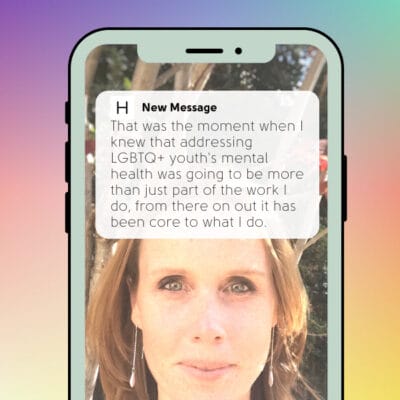 Amy: If you asked me in 10th grade what I wanted to be when I grew up, I would have quickly said, “a psychologist who works to improve adolescent mental health.” Growing up in a very small town, I saw how many people struggled with their mental health without access to quality care and support. Over the course of my graduate training, I found myself gravitating further away from direct clinical service and instead utilizing science and research to impact change on multiple levels. As a mental health services researcher, I worked with local school systems, state child welfare systems, county departments of mental health, and community-based mental health organizations to better understand and improve services for youth.
Amy: If you asked me in 10th grade what I wanted to be when I grew up, I would have quickly said, “a psychologist who works to improve adolescent mental health.” Growing up in a very small town, I saw how many people struggled with their mental health without access to quality care and support. Over the course of my graduate training, I found myself gravitating further away from direct clinical service and instead utilizing science and research to impact change on multiple levels. As a mental health services researcher, I worked with local school systems, state child welfare systems, county departments of mental health, and community-based mental health organizations to better understand and improve services for youth.
During the early part of my research career, very little of my work focused specifically on LGBTQ+ youth due to the lack of data collection on sexual orientation and gender identity. While working with colleagues in New Mexico I had access to high school student surveys from 2013, which contained data on sexual orientation, to analyze for a new grant submission on LGBTQ+ mental health. When I analyzed the data and saw the results, I cried. I cried for myself as a member of the LGBTQ+ community who was once one of those adolescents, and I cried for how many LGBTQ+ young people were still in so much pain. That was the moment when I knew that addressing LGBTQ+ youth’s mental health was going to be more than just part of the work I do, from there on out it has been core to what I do. For too long, there has been little to no progress in improving youth mental health, particularly for those who are BIPOC or LGBTQ+. My passion is to change the lack of change for the better.
At Hopelab, our guiding star is a future where all young people, in particular BIPOC and LGBTQ+ youth, are thriving, free from barriers to their mental health and well-being. What is your personal guiding star?
Jaspal: It’s important to me that I embody empathy in all aspects of my life. Empathy is essential to building good products. It’s necessary for creating a more just society. On a very personal level, empathy is a more interesting way to interact with the world, to always be listening and learning from the stories of others.
Amy: My personal guiding star is a life where I am deeply connected to others around me and have invested my time in efforts that ultimately bring about positive change in the world.
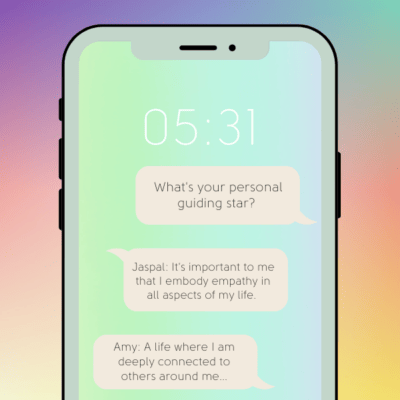
In a world of continuous change, we believe in and deeply value continuous learning. What’s something you’re most curious about? Or what’s one thing you’re learning now or learned recently?
Jaspal: Art! I know that’s quite quite broad, but that’s what I’ve been getting into over the past six months. I created a new course at UC Berkeley called The Art of Public Health with my colleague Somalee Banerjee. I identify as a maker, but not as an artist. Somalee is the artist. She’s a painter with her own studio practice, alongside her day job as a physician.
Our course explored how art improves society, through communication, advocacy, and community building. We spent time at Mothership, the Oakland Musuem’s Afrofutrism exhibit. We met artists like Ora Clay and Phung Huynh and Favianna Rodriguez. We learned how to make Risograph prints at the Berkeley Art Museum. One of my favorite pieces emerging from the course was by Yessenya Reynoso, a graduating Berkeley senior. She salvaged her family’s servilletas de tortillas – cloth napkins used to keep tortillas warm in Mexican households – and embroidered them together with generations of women in her family. It was a way to strengthen relationships and to capture family histories. I left this experience inspired by artists like Yessenya. Now I’m thinking about ways in which art and artmaking can intersect with our work at Hopelab. How could it help us in our daily work? What unrealized opportunities are there for art to improve purpose and well-being for young people?
Amy: I had a few months recently where I struggled with my sleep. I used it as an opportunity to learn more about sleep from both a physiological and psychological perspective. Sleep is so connected to wellness, and for me, this was a great opportunity to immerse myself in a topic where I previously had little training or knowledge. I listened to podcasts about sleep, I read peer-reviewed research about sleep, I learned the components of cognitive-behavioral therapy for sleep, and I learned strategies that ultimately improved my own sleep. The science of sleep is an area I am continuing to explore, particularly given its cyclical relationship with adolescent well-being and the relatively little attention to it in the broader mental health field.
We are ecstatic to see the appointment of these two leaders at Hopelab, who honor our values of co-creation, open-mindedness, and scientific grounding. Reach out if you’d like to connect and collaborate with Amy, Jaspal, and the rest of the Hopelab team!

